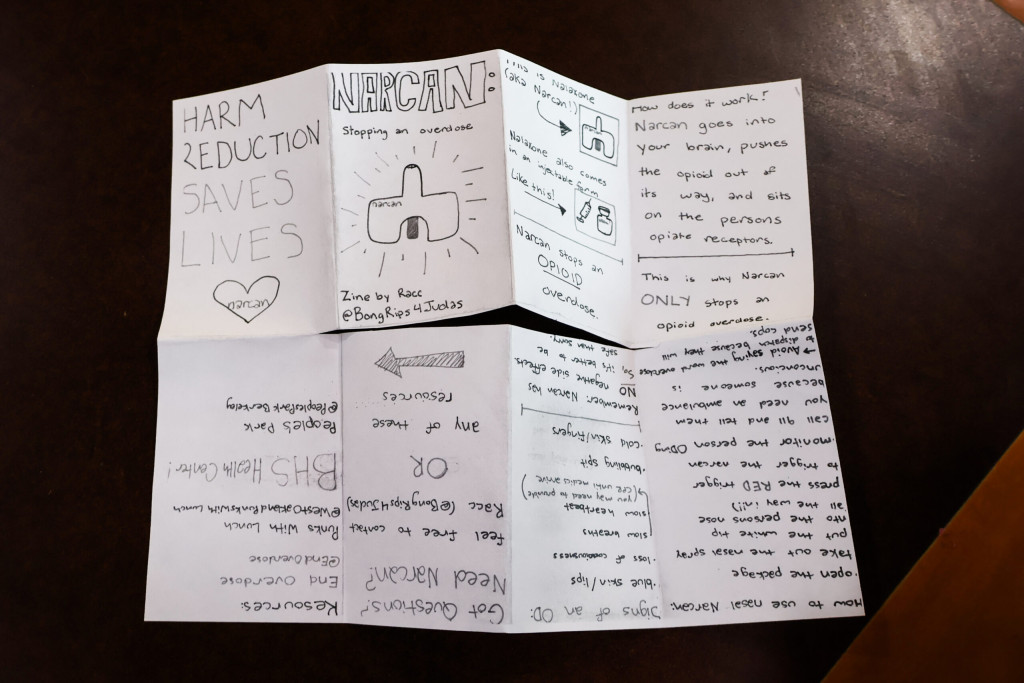In a world dictated by societal norms and social media, zines serve as a safe and anonymous space to express, educate, and share what you care about with others. But what are zines? How can youth begin to benefit from and practice the art?
Zines are mini magazines, often handmade and photocopied. The contents of zines are always different, as zine artists put their personal flair on issues that are important to them. Zine-making is not an exact science, although some key points can help when looking for inspiration or a way into zine-making.
“You can experiment because you're self-publishing it. You're doing it yourself … You can take risks, and it doesn't have to be perfect; it can be about anything that you dream of,” said Miriam Stahl, an art teacher at Berkeley High School. A common point comes up when learning about zines; there are no wrong answers when it comes to zine-making. Zines can be made about anything, by anyone, and for anyone or no one, this is how they liberate.
The zine-making process typically starts with the kernel of an idea. “When I get an idea, I try to write it down to get a clear idea of what I want to say (in my zine),” said Jayce Cooper, a BHS freshman, elaborating on their artistic process.
Zines are often made with the goals of showcasing information and highlighting art. “I like to make zines to spread information and education about things like Narcan and other forms of mutual aid and harm reduction,” said Cooper. Some governmental or other official sources may not educate on these subjects, as they are often seen as taboo or even falsely seen as an encouragement of drug use. This is why artists and activists like Cooper take to zine-making, as an easy way to spread awareness and education to their communities.

Next comes the zine skeleton. For this, the artist takes a paper and folds it into a little book which when unfolded, can be drawn and written in freely to create the zine.
Once the artist's idea and zine have been fleshed out, the artist then decides what they want to include in their zine. “I try to include voices from the community through submissions in my zine, which are not around any specific topic,” said BHS senior Violet Mcauliffe, describing the collaborative aspects of their zines.
After these steps, the artist can begin drafting their zine. This can mean anything, as the art medium possibilities are endless; zines commonly feature drawings, collages, photographs, short stories, and even articles.
In the next step in the zine-making process, printing, Cooper “(tries) to keep the original very clean, (so that) it's easy to make copies.” Once the zine is finished it's time to create copies for distribution. Not all zine artists distribute their zines, making them instead for themselves or only for small groups of people. However, if an artist chooses to distribute widely, there are many places to scan or copy zines, such as FedEx or a local copy store.
“When I scan them, we use the Risograph printer in the art room, which is a cool new thing we have and that can make them in any color,” explained Mcauliffe, describing a zine-making resource that can be found on the BHS campus.
Aside from the process of zine-making, zines can express many emotions for the people who make or consume them. “As a woman, I feel like I can't express my anger in a productive way. I just have to sit with it, so for me, it helps me get that rage out somewhere,” said Mcauliffe. “I also see scenes where people express the joy they feel in finding their identity … which is empowering.”
It is also a way to create community and make friends. “(For me, making zines) was a way to communicate, make friends, and share ideas ... a lot of the people ... are still my friends,” explained Stahl.
There are many places in the Bay Area that support zine-makers, from public and school libraries to small print presses. Trading, collecting, and making zines is a long-standing tradition of expression. It may not be mainstream, but that’s what makes it so cool.





